Tuesday, Oct. 9, 2007
Optional Assignment #3 was collected today and answers to the questions
were handed out in class. The hidden optional assignment was also
collected. Answers will appear online sometime today.
The Experiment #2 reports and the revised
Expt. #1 reports were also
collected today. It will take about one week to grade the Expt.
#2 reports. It will probably be more than a week before the Expt.
#1 revised reports are returned.
A copy of the Quiz #2 Study Guide was
handed out in class.
The Experiment #3 materials and the Scientific Paper should be
available in class on Thursday.
Today we
will cover a lot of material on the seasons. The first part,
causes of the seasons, will be on this week's quiz. The second
part, a more detailed look at the equinoxes and the summer and winter
solstices will not be on this week's quiz.
First some very basic information (that every college
graduate should
know) found on p. 73 in the photocopied Class Notes.
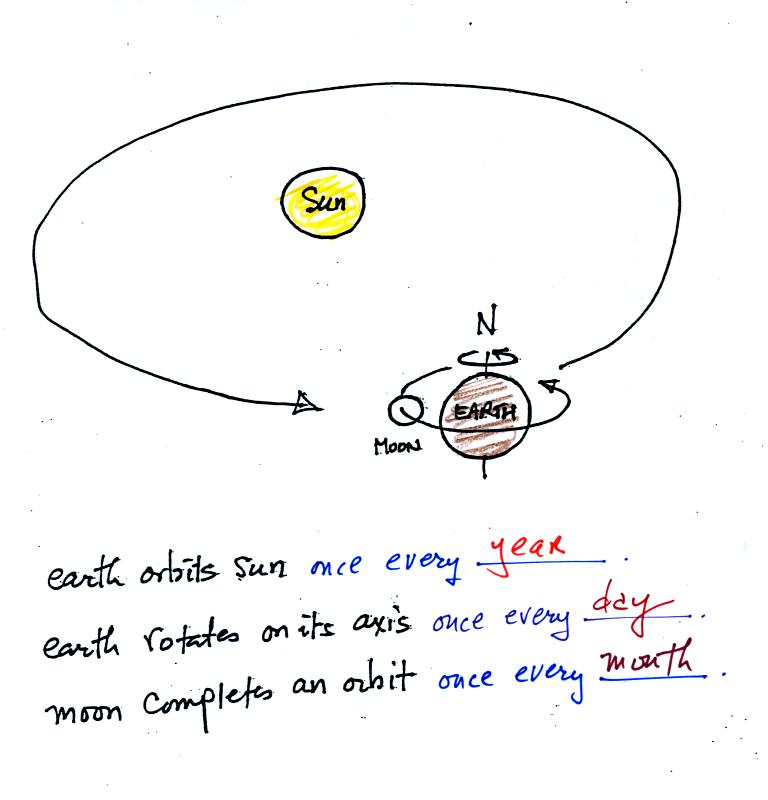
Many people would have missed the 3rd question. Many
people think
the moon orbits the earth in about a day. This is because they
see it in about the same position in the sky on successive
nights. We can see what actually happens in the next figure (not shown in class)
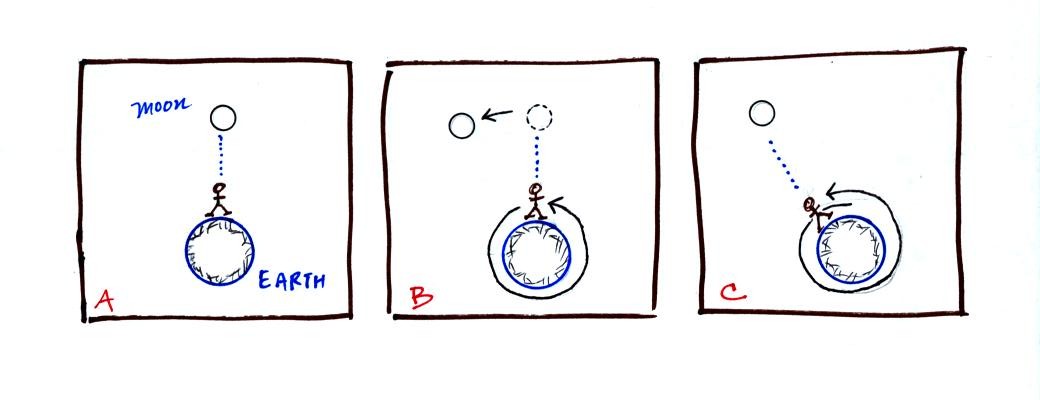
On the
first night in Fig. A the person looks up and sees the moon. One
day later on
night B, the earth has completed one rotation on its axis and the
person
is looking up at the same point in space. The person doesn't see
the moon in the same position as the night before; the moon has moved a
little bit in its orbit. In Fig. C, a little more than 24 hours
after Fig. A, the person again sees the moon overhead. If you
were to make a note of the time the moon rises you would notice it
rises a little later each successive night.
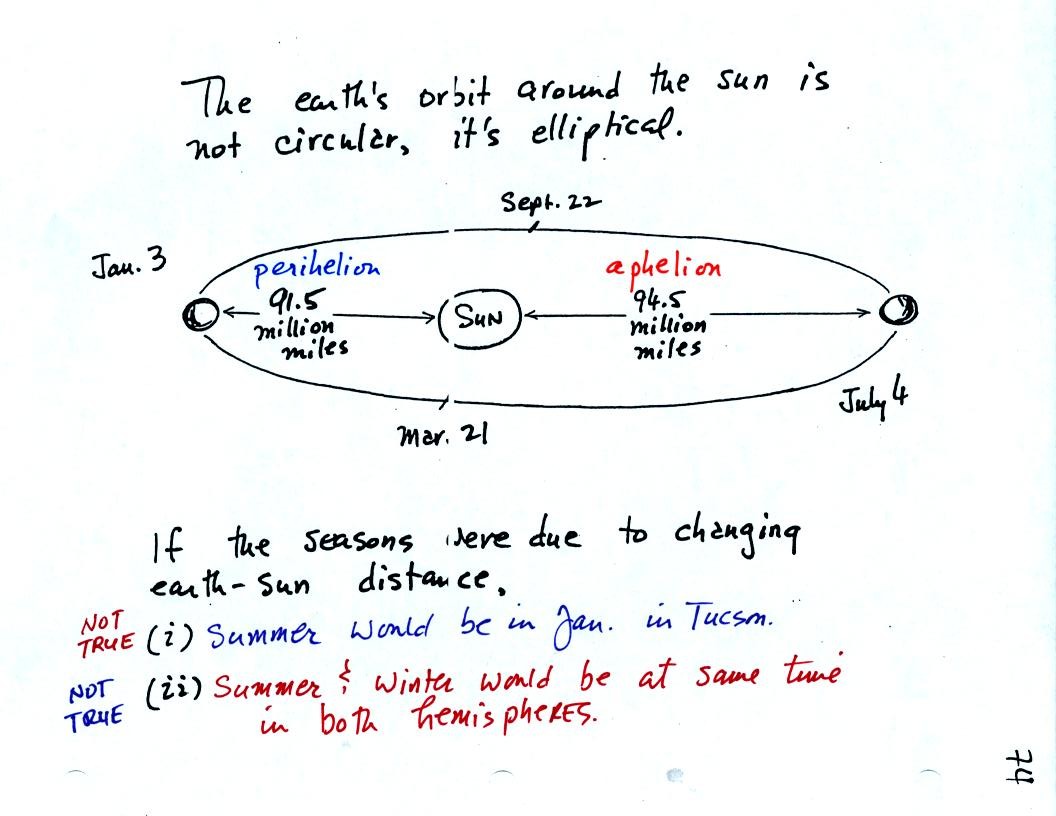
Many people know that the earth's orbit around the sun is
not circular and that the distance between the earth and sun changes
during the year. Many people think this is the main cause of the
seasons. The earth is closest to the sun on the perihelion,
furthest on the apehelion.
The earth is closer to the sun in January than in
July. If
this were the main cause of the seasons, summer in Tucson would be in
January and winter would be in July. Summer and winter would both
occur at the same times in both hemispheres. Neither of these is
true. The changing
distance
between the earth and the sun has an effect but is not the main cause
of seasonal changes.
The main cause of the seasons is the fact that the earth is tilted with
respect to its orbit around the sun. This is shown in the next
figure.
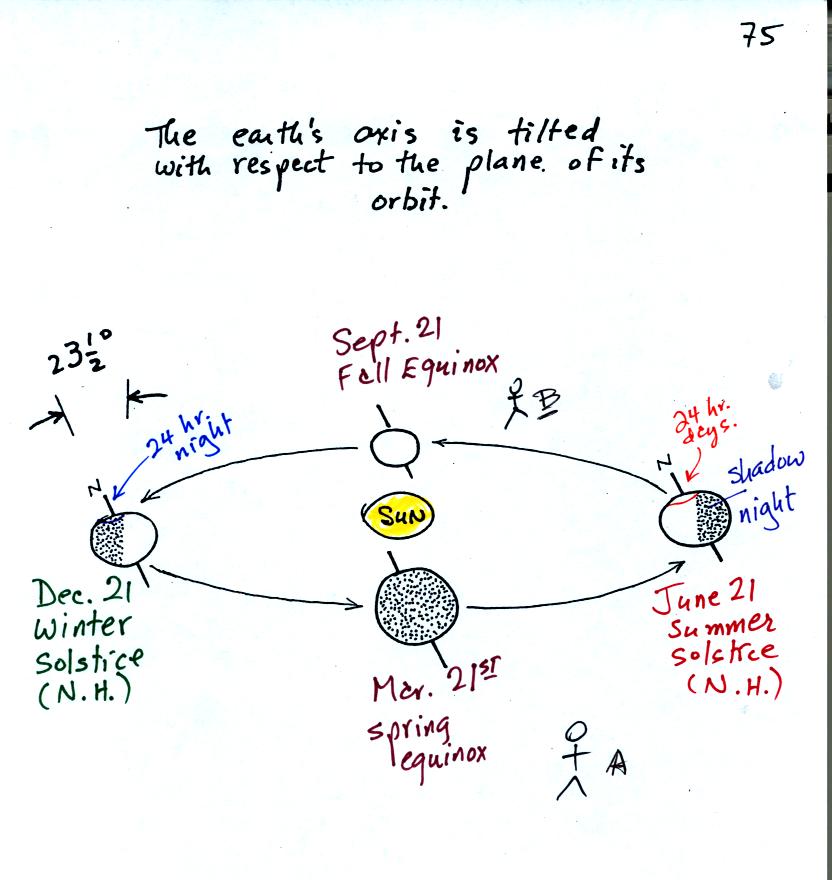
This figure shows the tilted earth at four locations in its
orbit around the sun. You should be able to start with a blank
sheet of paper and
draw a
picture like this. Note how the N. Pole tilts away
from the sun
on Dec. 21st, the winter solstice. The N. Pole is tilted toward
the sun on June 21. Those are good places for you to
start your sketch. You should also be able to name and attach a
date to each of the four locations.
Before going on, try to imagine what this picture would like if instead
of standing at Point A you
moved to the other side of the scene and looked back toward the
sun from Point B.
Click here for a
sketch.
Seasons on the earth are caused by the changing orientation of the
earth relative to the sun. The figure above doesn't really
explain why this is true.
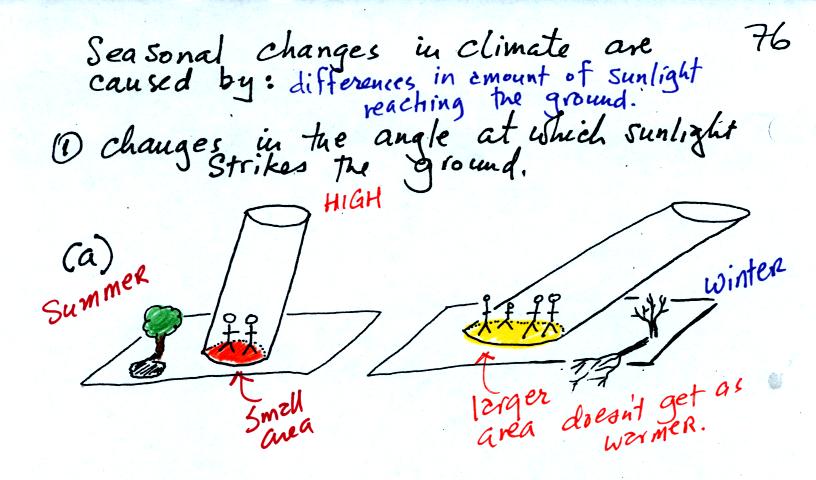
In the summer when the sun reaches a high elevation angle
above the
horizon, an incoming beam of sunlight will shine on a small area of
ground. The ground will get hot. The two people sharing the
shaft of summer sunlight will get a sunburn.
In the winter the sun is
lower in the sky. The same beam of sunlight gets spread out over
a larger area. The energy is being used to try heat a larger
amount of ground. The result is the the ground won't get as
hot. 4 people are able to share the winter sunlight and won't get
burned as quickly.
These area differences can be illustrated using three pieces
of PVC
pipe. The end of one piece is cut perpendicularly. The ends
of the 2nd and 3rd pieces are cut at 30o and 60o
angles. These aren't too much different from the highest angle of
the sun in the sky in Tucson in the summer, on the equinoxes, and on
the winter solstice, respectively.
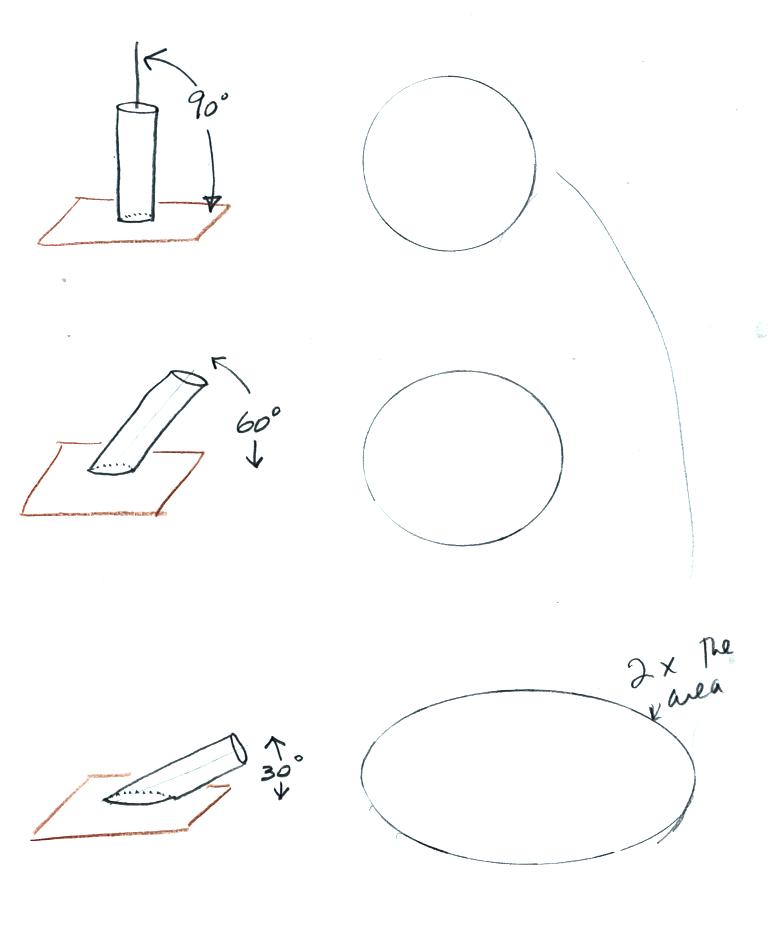
The end of the 30o pipe covers twice the area of
the 90o
pipe. The
end of the 60o pipe is a little larger but not a lot larger
than area of the end of the 90o
pipe.
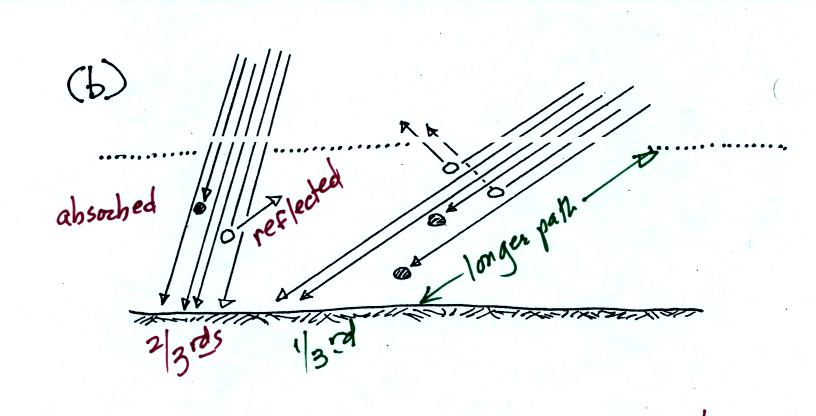
As sunlight passes through the atmosphere it can be absorbed
or
reflected. On average (over the globe) only about 50% of the
sunlight arriving at
the top of the atmosphere actually makes it to the ground. A beam
of sunlight that travels through the atmosphere at a low angle (right
picture above) is less intense than beam that passes through the
atmosphere more directly (left picture).

The sun shines for more time in the summer than in the
winter. In
Tucson the days (daylight hours) are around 14 hours long near the time
of the summer
solstice. In the winter the sun only shines for 10 hours on the
winter solstice. Days are 12 hours long on the equinoxes.
The
remainder of the material covered today won't be on this week's
quiz. The material will be added to today's online notes sometime
after the quiz.







